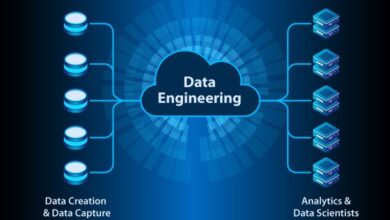
There were 95 disclosed data security incidents in November last year that resulted in 32-million breached records in Europe alone. Everyday new breaches come to light with detrimental repercussions on customers and enterprises too.
But with increasing demands from the board to become more data-driven and the exponential rate of data sources and data regulations – where do you strike the balance?
Compliance is King
The data landscape is, as always, evolving. The cloud continues to grow in popularity, AI and machine learning are ever more in vogue, and data fabric, data mesh, and data-as-a-product methodologies are on the minds of many data professionals. Consequently, regulations to protect data continue to expand as new laws and mandates come into effect.
As vital as the creation of new regulations are, this makes real-time data access control even more difficult to get right because the regulatory landscape is getting more complex by the day with new rules that organisations must abide by. There are many new laws on the horizon, some being sector-specific, others impacting all sectors. The EU has proposed and is in the process of adopting a wide range of new regulations. For example, the Data Governance Act has recently been enforced and will be applicable later this year, the AI Act is on its way and others such as the Data Act, are still being negotiated. In the UK, the Data Protection and Digital Information Bill is in development with the aim to make the GDPR more flexible and decrease the compliance burden for businesses in an attempt to build a pro-growth regime.
Maintaining compliance with this ever-changing landscape of regulations is no easy feat, particularly for companies that use manual processes.
A unified approach
Within a typical organisation, it is likely that data and security teams are not communicating efficiently. This largely occurs because they have opposing motivations and varying goals.
Silos between these teams must be broken down to help to improve accountability and make data available, where it should be, whilst increasing efficiency. It is imperative that these teams speak the same language for a safer and sustainable environment.
What’s more, a lack of unification across data sources can also make access management quite difficult. If data sources are copied, stored in a team or department-specific silos, or fragmented across a data ecosystem, it becomes very hard to control this information. Sharing data between these sources is arduous, and ensuring compliant data use across all possible locations can be nearly impossible. Data access management should be consistent throughout a data stack, and this can only be achieved when data policies are applied universally.
Removing the manual burden
There are ways that data security can be automated reducing both lots of manual effort and the maintenance burden of managing access and privacy controls for different roles across the organisation. These new types of approaches help to unify and enforce policy across data platforms, including cloud platforms, to ensure the right people get access to the right data, data usage is monitored in real-time, and more generally appropriate safeguards are in place. Once these horizontal and by-design approaches to compliance are set up, time to data accelerates.
An example of two providers who are making moves to address existing issues is Immuta, the data security leader, and Interago, a cloud data platform consulting company. They recently announced a strategic partnership to help Norwegian enterprises accelerate secure data access across all major cloud platforms.
This move enabled enterprises to implement data governance and security controls when data is distributed across complex ecosystems in the cloud. The partnership put data security first, ensuring the safe enforcement of strict data policies for customers, whilst maintaining simple, scalable processes internally. As a result, Interago can help its customers to easily enforce data security policies so that organisations can safely maximise the value of that data in accordance with the growing list of local rules and privacy regulations.
A Data Secure Future
The slowing of data breach incidents is unlikely. On top of this, organizations will always need to monitor and adapt who should have the right to access important data – agility is key. With the added pressure to comply with ever-changing regulations whilst cultivating a culture of synergy between data and security teams, organisations have a lot on their plate.
However, automated solutions which remove tired manual processes are the route to achieving true compliance. A secure, scalable data mesh architecture is critical to data security.





